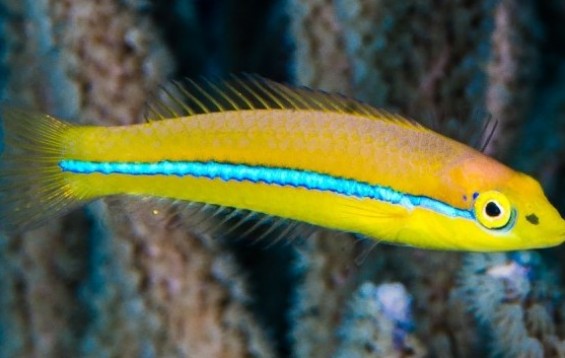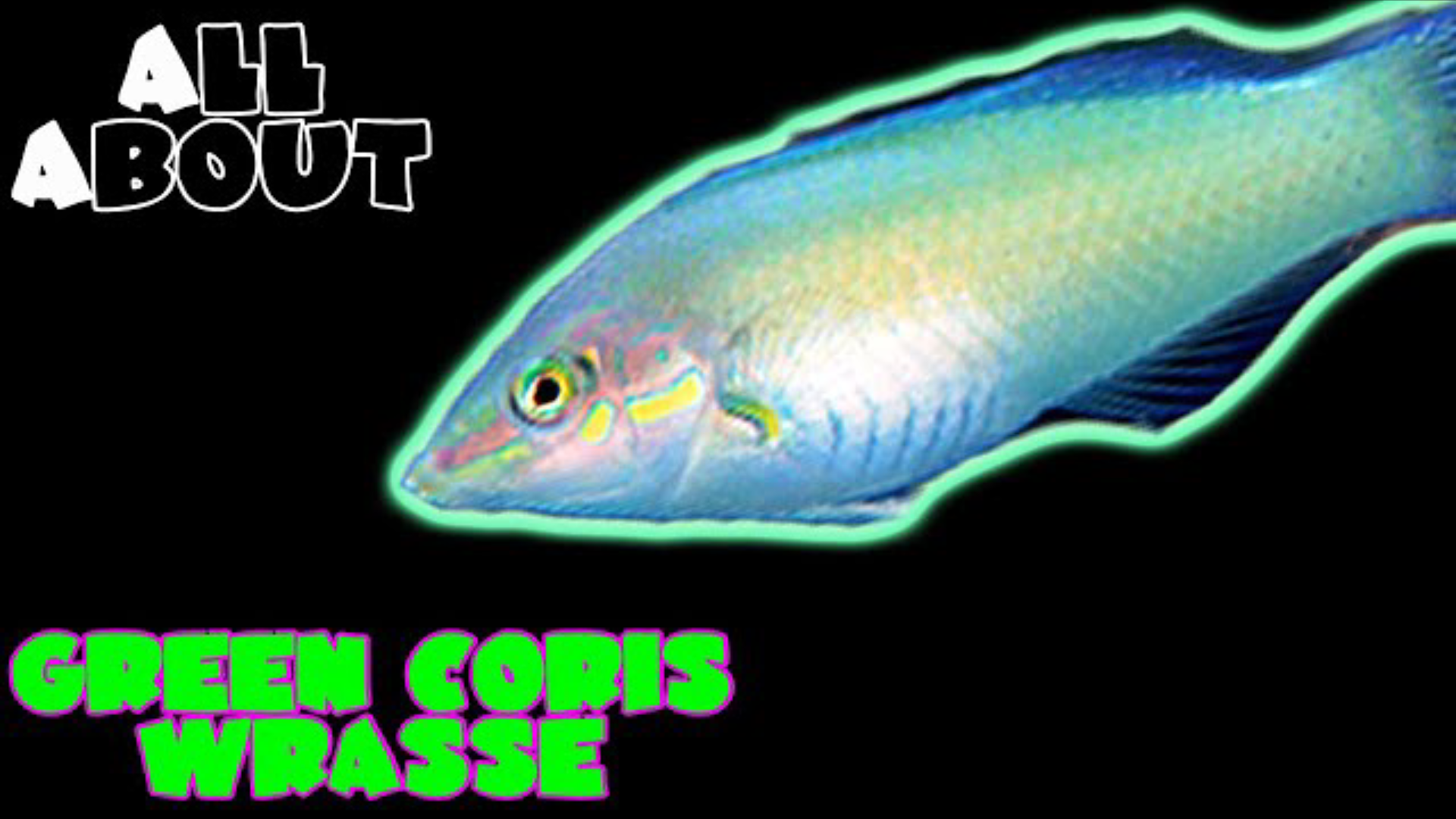- Name:
Neon Wrasse
(View AKA's) - Family: Labridae
- Species: Wrasse
- Scientific Name: Halichoeres garnoti


More Details
General info about Neon Wrasse
The Neon Wrasse is one of the easiest wrasses to identify in every color phase. Adults have a golden to yellow head, a black vertical bar behind the tip of the pectoral fin, merging with a broad black area on the upper side, continuing to the top of the caudal peduncle and upper caudal fin and blue underneath. Juveniles are yellow with a turquoise-blue stripe along their sides. An aquarium is required for the Neon Wrasse. They are peaceful to other fish, but are territorial, bordering on aggressive with conspecifics, so it is best to keep one per tank. They require plenty of swimming room and excellent water conditions.
Caution with Neon Wrasse
Wrasse are considered jumpers make sure your aquarium has a tight-fitting canopy or screen cover to prevent the Wrasse from jumping out of your aquarium. Wrasse have been known to jump through the smallest of holes in a canopy.
Wrasses prefer to have a 2" (5cm) sandbed to allow them to burrow into the sand to sleep or when they feel like they are in danger. Some people with bare bottom tanks have also added a Tupperware with a 2" deep sand bed to accommodate the wrasse's needs.
They are generally peaceful but may display aggression towards members of the same species.
Relevent Articles
Original Detail
| Name | Species | Family | Scientific Name | More Detail | Added by |
|---|---|---|---|---|---|
| Neon Wrasse | Wrasse | Labridae | Halichoeres garnoti | The Neon Wrasse is one of the easiest wrasses to identify in every color phase. Adults have a golden to yellow head, a black vertical bar behind the tip of the pectoral fin, merging with a broad black area on the upper side, continuing to the top of the caudal peduncle and upper caudal fin and blue underneath. Juveniles are yellow with a turquoise-blue stripe along their sides. An aquarium is required for the Neon Wrasse. They are peaceful to other fish, but are territorial, bordering on aggressive with conspecifics, so it is best to keep one per tank. They require plenty of swimming room and excellent water conditions. | PalaciosAn |
Changed by users
| Submitted Date | Submitted By | Status | Action |
|---|


